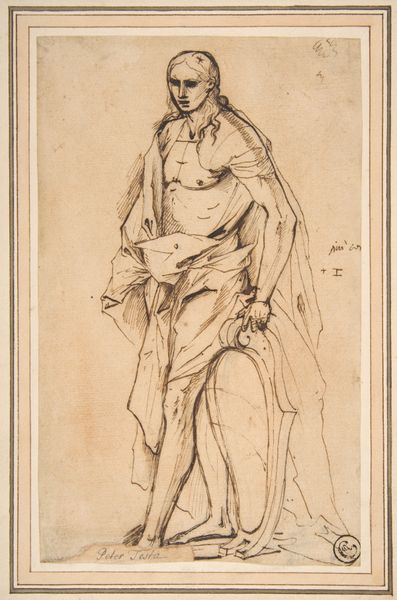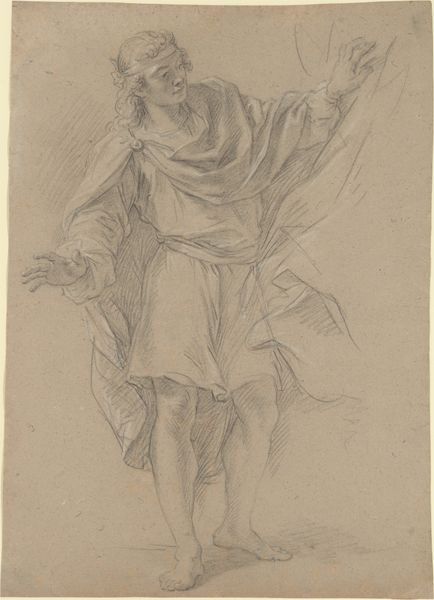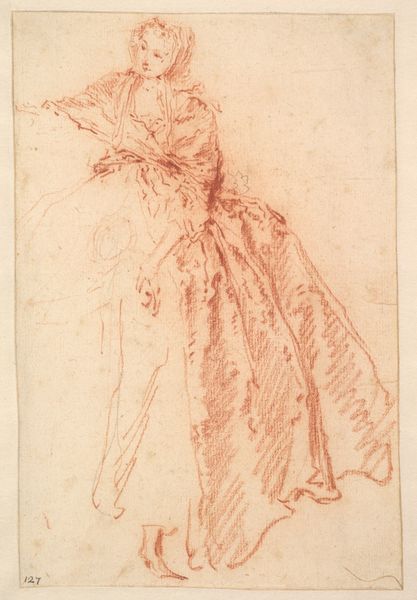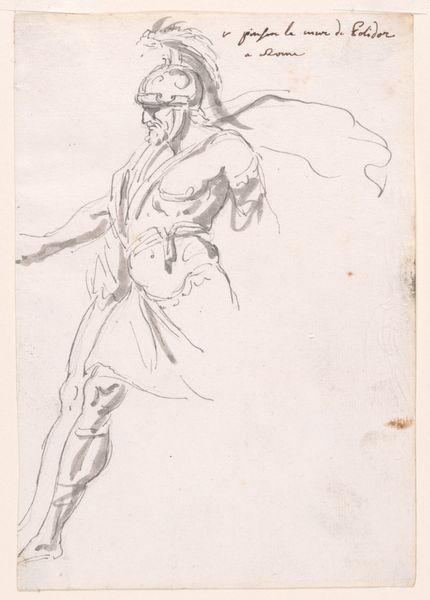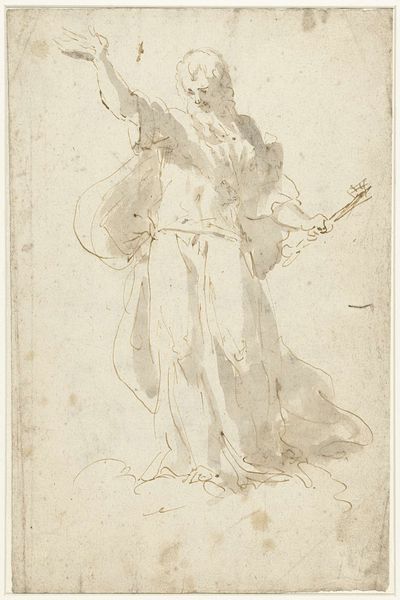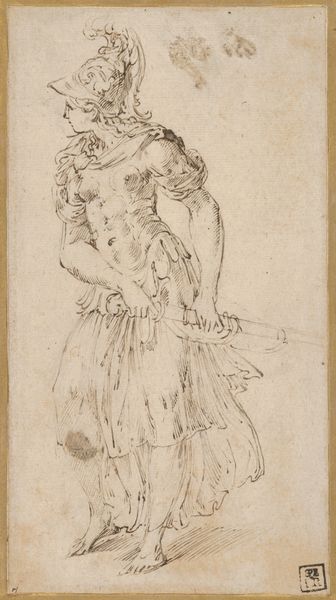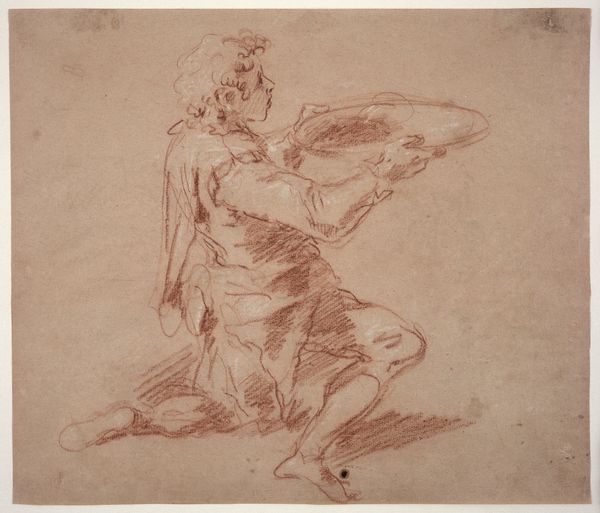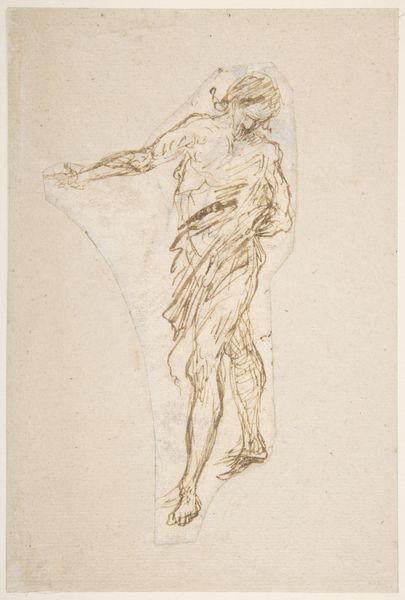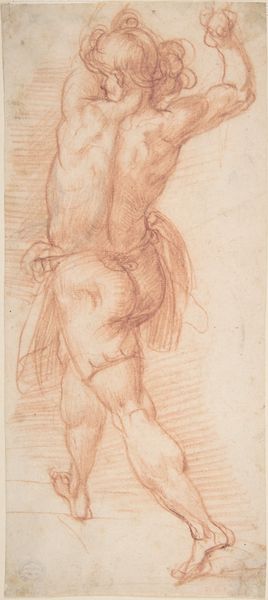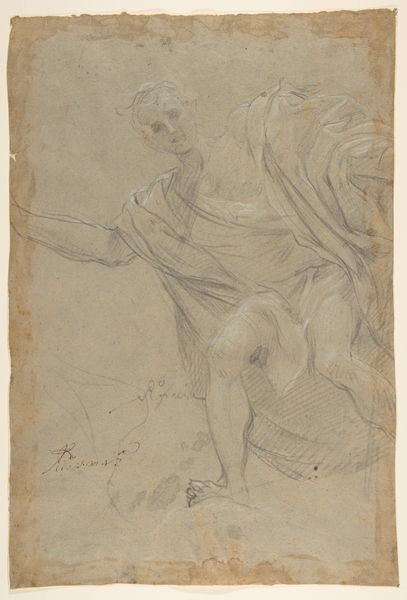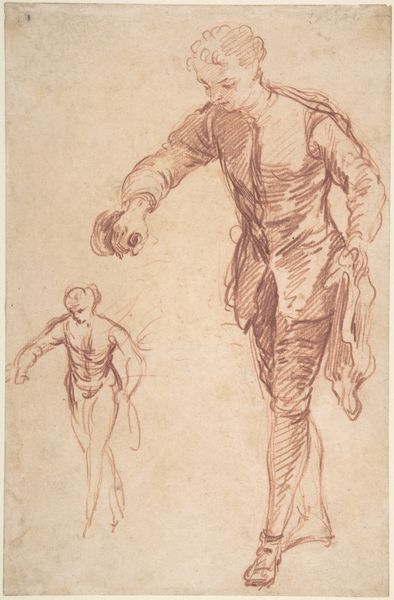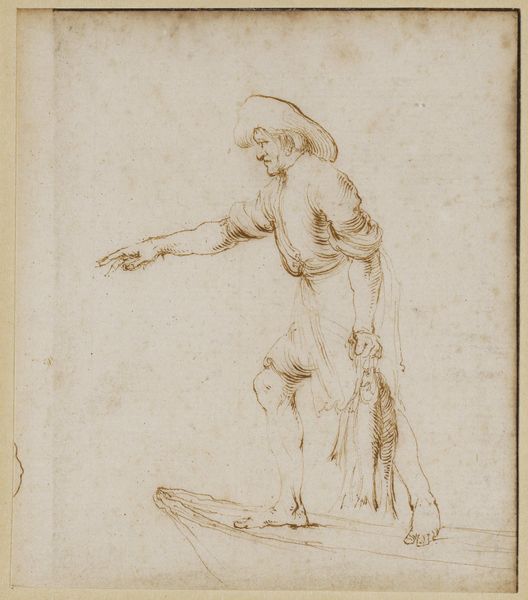
Sketch of a Standing Male Figure Wearing a Cape 1800 - 1900
0:00
0:00
drawing, pencil
#
portrait
#
drawing
#
figuration
#
romanticism
#
pencil
#
history-painting
#
academic-art
Dimensions: 8-1/4 x 5-3/4 in
Copyright: Public Domain
Editor: Here we have an intriguing pencil drawing titled "Sketch of a Standing Male Figure Wearing a Cape," created sometime between 1800 and 1900 by an anonymous artist. It feels very theatrical, almost like a stage actor. How do you interpret this work? Curator: The drama you perceive is central to its power. This sketch, rooted in the era's fascination with history painting, reflects a society grappling with revolutions and shifting power structures. Consider the cape: who wears a cape, and what does that signify about the subject’s social status or aspirations? Editor: I suppose it suggests authority. Maybe someone important? But his posture seems a little unstable, unbalanced even. Curator: Exactly! It begs the question: what kind of authority? Is it legitimate, or is it performative? Look at the period--Romanticism celebrated the individual and emotion, but also coincided with massive social inequality and oppression. The sketch becomes a visual text ripe with contradictions. How might gender, too, play a role? Does this portrayal reinforce or subvert conventional representations of masculinity? Editor: That’s really interesting. So, it's not just about aesthetics; it's a commentary on society at that time. I hadn’t thought about the instability representing a wider societal anxiety. Curator: Precisely! Art often serves as a mirror, reflecting both the dominant ideologies and the undercurrents of resistance and tension within a culture. Hopefully that lens gives you a clearer understanding of art's capacity to invite broader dialogue and engage critical perspectives. Editor: I see it now. Thanks so much! Curator: My pleasure!
Comments
No comments
Be the first to comment and join the conversation on the ultimate creative platform.
